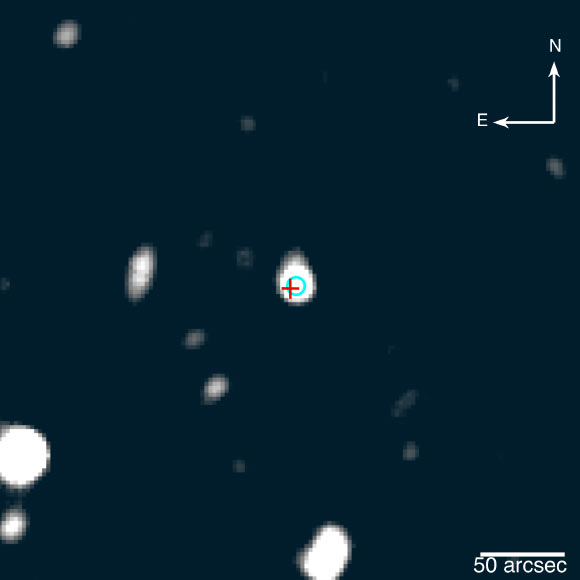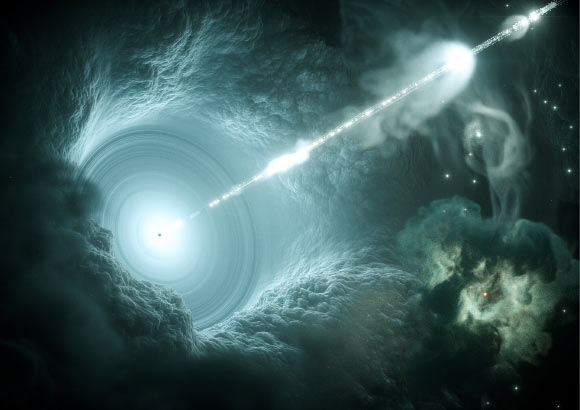Astronomers Discover Most Distant Blazar Yet | Astronomy – Sci-News.com
Astronomers using the Large Binocular Telescope have found a blazar 13 billion light-years from Earth, making it officially the most distant blazar ever detected.
Blazars, a type of galaxy, are among the most luminous known objects in the Universe. They appear bright in all forms of light, including gamma rays, the highest-energy light.
At the heart of a blazar lies a supermassive black hole of millions solar masses surrounded by a disk of hot gas and dust.
As material in the disk falls toward the black hole, some of it forms dual jets that blast subatomic particles straight out of the disk in opposite directions at nearly the speed of light.
Designated PSO J030947.49+271757.31 (PSO J0309+27 for short), the newfound blazar was first spotted in data from the NRAO VLA Sky Survey and the Panoramic Survey Telescope and Rapid Response System PS1 databases.
The discovery was confirmed using the X-Ray Telescope (XRT) on board NASA’s Neil Gehrels Swift Observatory and the Multi-Double Object Spectrographs (MODS) at the Large Binocular Telescope (LBT).
“The spectrum that appeared before our eyes confirmed first that PSO J0309+27 is actually an active galactic nucleus, or a galaxy whose central nucleus is extremely bright due to the presence, in its center, of a supermassive black hole fed by the gas and the stars it engulfs,” said Silvia Belladitta of the University of Insubria and the Italian National Institute for Astrophysics (INAF) and colleagues.
“In addition, the data obtained by LBT also confirmed that PSO J0309+27 is really far away from us using the shift of the color of its light towards red or redshift with a record value of 6.1, never measured before for a similar object.”

This image (colorized), taken by the X-Ray Telescope on board NASA’s Neil Gehrels Swift Observatory, shows the blazar PSO J030947.49+271757.31. The X-ray position is indicated with a red circle. The cyan cross denotes the position of the source detected by the Panoramic Survey Telescope and Rapid Response System PS1. Image credit: Belladitta et al, doi: 10.1051/0004-6361/201937395.
PSO J0309+27 is the most powerful persistent radio source in the primordial Universe, within the first billion years since its formation, according to the astronomers.
They also found that even in X-rays, this blazar is the brightest cosmic source ever observed at these distances.
“Observing a blazar is extremely important, for every discovered source of this type, we know that there must be a hundred similar, but oriented differently and therefore too weak to be seen directly,” Belladitta said.
The discovery of PSO J0309+27 allows astronomers to quantify a space density of blazars in the primordial Universe.
“From these new LBT observations, still under development, we also estimate that the central engine that powers PSO J0309+27 is a black hole with a mass equal to about a billion times the mass of our Sun,” Belladitta said.
“Thanks to our discovery, we are able to say that already in the first billion years of life of the Universe, there existed a large number of very massive black holes emitting powerful relativistic jets.”
“This result places tight constraints on the theoretical models that try to explain the origin of these huge black holes in our Universe.”
A paper about the discovery was published in the journal Astronomy & Astrophysics.
_____
S. Belladitta et al. 2020. The first blazar observed at z > 6. A&A 635, L7; doi: 10.1051/0004-6361/201937395






